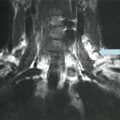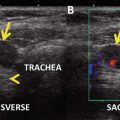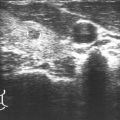-hydroxylated vitamin D analogues, most patients with hypoparathyroidism have been shifted to treatment with either alfacalcidol or calcitriol, as the plasma half-life of activated vitamin D metabolites is much shorter (approximately 3–6 h) than the biological half-life of vitamin D2 or D3 (approximately 3 weeks). The advantage of the shorter plasma half-life of activated vitamin D metabolites is that a new equilibrium is obtained at a much faster rate.
Only a minority of patients with transient hypoparathyroidism will have permanent hypoparathyroidism (ranging from 0.5 to 10.6 %) (5,6), because the resolution of hypoparathyroidism is most likely related to the recovery of the parathyroid glands from the surgical insult. It is currently difficult to predict which patients will recover, and it is unclear whether any specific intervention will facilitate recovery. Some surgeons do not prescribe calcium supplements in the hope that the resultant mild hypocalcemia will stimulate parathyroid recovery, but recently Sitges-Serra et al. suggested that adequate treatment during the period of transient hypocalcemia may reduce the metabolic stress on the already injured ischemic glands, allowing these glands to “rest and recover,” thus possibly reducing the risk of permanent hypoparathyroidism [31]. Routine utilization of calcium and vitamin D supplements after thyroidectomy, or therapy only related to hypocalcemic symptoms, to preserve parathyroid function and avoid permanent hypoparathyroidism, remains a matter of debate. The latest review and meta-analysis identified postoperative calcium and vitamin D supplementation as well as bilateral subtotal thyroidectomy to be effective in preventing transient hypocalcemia compared to the Hartley Dunhill operation (removal of one entire lateral lobe with isthmus and partial/subtotal removal of opposite lateral lobe), but the same meta-analysis did not demonstrate any measure to be significantly associated with a reduction in permanent hypocalcemia [32].
Until recently, hypoparathyroidism was one of the only hormonal insufficiency states that was not treated by hormone replacement therapy. PTH replacement therapy is now approved by the FDA for the treatment of transient and permanent hypoparathyroidism. Available data do suggest an improved quality of life in response to PTH replacement therapy versus calcium and vitamin D analogue therapy [33]. PTH is currently used to treat osteoporosis with a 2-year time limit on therapy. A better understanding of the effects of long-term treatment with PTH in the treatment of hypoparathyroidism is important, because the effect on bone turnover could be different if it is used for a period longer than 2 years [34]. Data in subjects affected by hypoparathyroidism treated with PTH analogues demonstrate a densitometric and histomorphometric improvement in abnormal bone-remodeling dynamics and return of bone metabolism toward normal euparathyroid levels [35, 36].
Long-Term Follow-Up
Patients who develop permanent hypoparathyroidism should receive appropriate follow-up care to monitor for long-term complications related to supplemental therapy. The serum calcium level should be monitored, and soft-tissue calcification and nephrocalcinosis can be prevented by keeping the serum calcium-phosphate product values less than 55 [1, 37]. Not only should calcium level be monitored in these patients, but also other medical aspects because recent epidemiological data have shown that permanent hypoparathyroidism is associated with an increased risk of depression and other neuropsychiatric disease and infections, whereas such patients seem to be protected against fractures of the upper extremities and gastrointestinal malignancies [38].
Management of the Case
In our patient, the acute diarrhea probably worsened an unstable clinical condition so that both calcium (1.5 g daily of calcium as calcium citrate) and calcitriol (0.75 mcg daily) were increased and oral magnesium oxide (400 mg a day) was also added. After 4 weeks, laboratory evaluation showed a calcium level of 2.1 mmol/L, normalization of serum magnesium, and hypercalciuria with a 24 h urinary calcium of 14 mmol (normal range 1.25–10 mmol/24 h). Since her blood pressure was not controlled, a thiazide diuretic was added to mitigate the increased renal calcium excretion. The patient was advised to adhere to a low-sodium diet; magnesium therapy was stopped.
After an additional period of 4 weeks, biochemical parameters were satisfactory [serum calcium, 2.20 mmol/L; serum phosphorus, 1.55 mmol/L (normal range, 0.75–1.45); 24-h urinary calcium, 10 mmol]. The patient was free of symptoms of hypocalcemia; physical examination showed negative Chvostek and Trousseau signs.
Clinical Pearls/Pitfalls
Hypocalcemia after thyroidectomy is not without cost, as it may lead to a longer postoperative inpatient stay, extra medication, the need for more blood tests, and extra outpatient visits.
The management of postsurgical hypoparathyroidism is best accomplished by identifying high-risk patients preoperatively.
Prediction of post-thyroidectomy hypocalcemia still remains a challenge, but postoperative PTH, preoperative vitamin D, and postoperative changes in calcium should be considered predictors of post-thyroidectomy hypocalcemia.
The aim of treatment with calcium and calcitriol is to keep the level of albumin-adjusted calcium at the lower end of the normal range, to reduce the risk of hypercalcemia and hypercalciuria; PTH therapy may be another therapeutic option for permanent hypoparathyroidism.
Lack of response to oral therapy in treatment of hypoparathyroidism following thyroidectomy has rarely been reported, and it is mandatory to exclude other potential causes for hypocalcemia.
References
2.
3.
4.
Chadwick D, Kinsman R, Walton P, Systems DC. The British Association of Endocrine and Thyroid Surgeon fourth national audit. Henley-on-Thames: Dendrite Clinical Systems Ltd; 2012.
5.
6.
Terris DJ, Snyder S, Carneiro-Pla D, Inabnet 3rd WB, Kandil E, Orloff L, American Thyroid Association Surgical Affairs Committee Writing Task Force, et al. American Thyroid Association statement on outpatient thyroidectomy. Thyroid. 2013;23:1193–202.CrossRefPubMed
Stay updated, free articles. Join our Telegram channel

Full access? Get Clinical Tree






